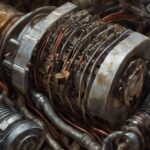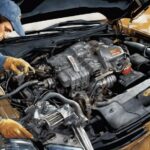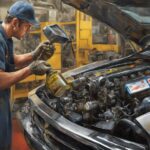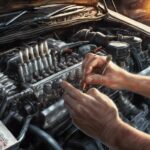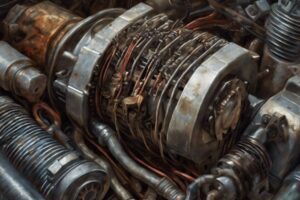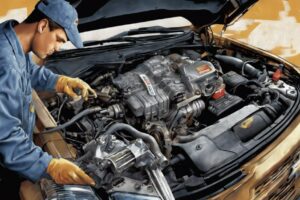Crossmembers in your car’s suspension system offer essential structural support and stability, connecting frame rails and bearing transmission weight.
They come in tubular, stamped steel, and boxed types impacting handling and steering response. Tubular is lightweight yet sturdy, boxed excels in toughness, and stamped steel strikes a balance.
Crossmembers prevent chassis flex and twist, distribute weight for equilibrium, and enhance rigidity for alignment.
Proper installation maintains panel alignment, evenly distributes weight, and fortifies the structure for better performance.
Understanding these components is key to optimizing your car’s suspension system for improved handling and stability.
What You Need to Know
- Crossmembers support chassis, enhance stability, and improve handling.
- Different materials impact strength, weight, and performance.
- Impact absorption and safety are enhanced by crossmembers.
- Proper installation ensures structural integrity and performance.
- Types like tubular, boxed, and stamped steel offer varying benefits.
Importance of Crossmembers in Suspension
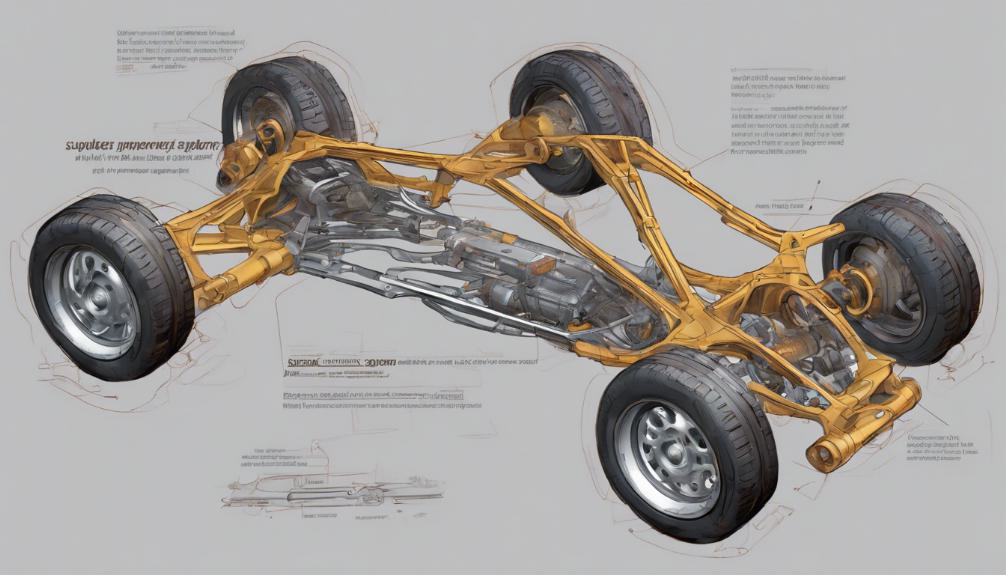
Crossmembers play an essential role in a car’s suspension system, providing necessary structural support and stability by connecting the frame rails and carrying the weight of the transmission.
The materials used for crossmembers, such as steel or aluminum alloys, offer advantages like strength, durability, and weight savings, essential for overall vehicle performance.
The design of crossmembers directly impacts the car’s handling and steering response.
Well-engineered crossmembers enhance chassis rigidity, reducing flex and body roll during cornering, ensuring precise wheel alignment for improved performance.
Upgraded crossmembers can also accommodate larger transmissions, exhaust systems, or engine swaps, allowing for customization and performance enhancements tailored to your needs.
Types of Crossmembers Used in Cars
Among the various components found in a car’s suspension system, different types of structural elements play essential roles in ensuring top performance and handling.
When it comes to crossmembers used in cars, you’ll encounter tubular, stamped steel, and boxed varieties.
Tubular crossmembers are favored for their lightweight nature and high strength, making them ideal for high-performance applications.
On the other hand, boxed crossmembers excel in rigidity and durability, providing enhanced support to the vehicle’s frame.
Stamped steel crossmembers are commonly seen in mass-produced vehicles, offering a balance between strength and cost-effectiveness.
The choice of crossmember material can have a significant impact on your car’s handling, structural integrity, and overall performance.
When considering crossmembers for your vehicle, it’s important to weigh the material differences and design considerations to make informed decisions on upgrades or modifications to your suspension system.
Functionality of Crossmembers in Vehicle Stability
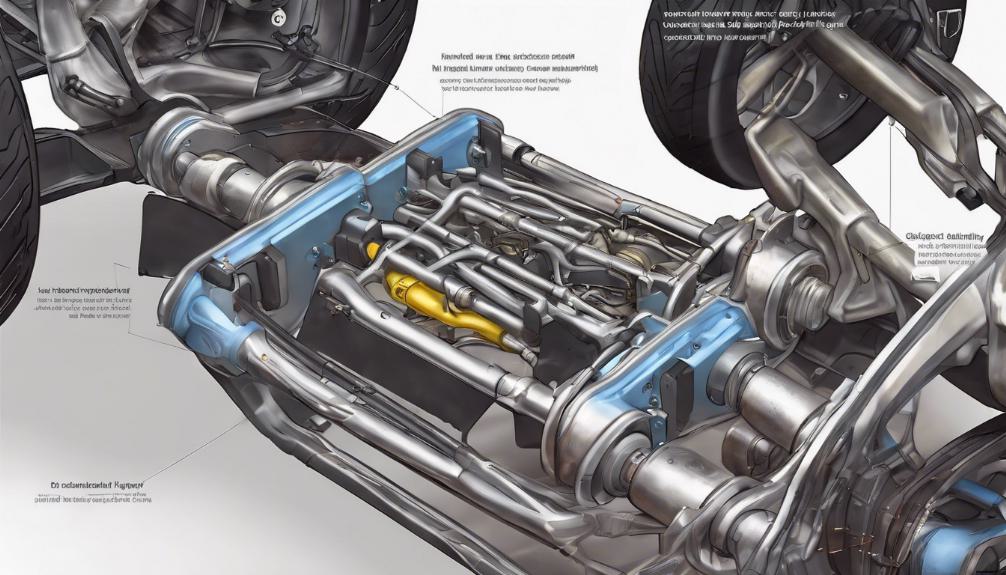
Playing an essential role in maintaining structural integrity and stability, crossmembers in vehicles support the transmission and help distribute weight evenly. Here are some key functions of crossmembers in ensuring vehicle stability:
- Structural Support: Crossmembers prevent chassis flex and twisting, providing vital support to the vehicle’s structure.
- Weight Distribution: By distributing weight evenly, crossmembers contribute to the proper balance and stability of the vehicle.
- Chassis Rigidity: These components enhance chassis rigidity, which is essential for maintaining body alignment and overall vehicle performance.
- Body Alignment: Crossmembers play a significant role in ensuring that body panels are correctly aligned, improving aesthetics and aerodynamics.
- Enhanced Handling: The proper installation and design of crossmembers result in improved handling, reducing vibrations and noise while enhancing the driving experience.
These functions collectively work to optimize the stability, safety, and performance of the vehicle on the road.
Role of Crossmembers in Impact Absorption
To understand the importance of impact absorption in vehicle safety, consider how crossmembers in the suspension system play a pivotal role in distributing and minimizing collision forces.
During a crash, crossmembers act as vital components in providing crash protection by absorbing and dispersing energy from impacts.
By effectively managing the forces generated during a collision, crossmembers help protect the vehicle’s frame and occupants.
This energy dispersion not only minimizes damage to the vehicle but also enhances structural rigidity, preventing deformation and maintaining overall integrity.
In addition, the absorption of impact energy by crossmembers greatly reduces the risk of injuries to passengers in the event of a crash.
Properly designed crossmembers are fundamental to reinforcing the chassis and ensuring stability under various driving conditions.
Therefore, the role of crossmembers in impact absorption is essential for improving overall vehicle safety and enhancing crashworthiness.
Significance of Proper Crossmember Installation
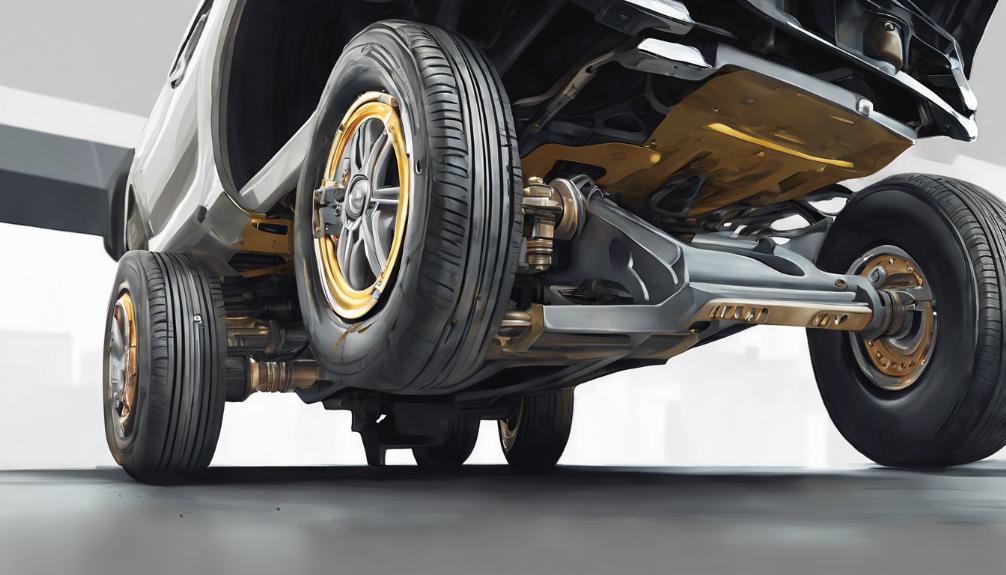
Why is proper crossmember installation essential for ensuring the structural integrity and performance of your vehicle?
Proper installation of the crossmember is vital for maintaining the stability and alignment of your vehicle’s body panels.
When installed correctly, the crossmember effectively supports the transmission, distributing weight evenly and handling loads efficiently.
This ensures that your vehicle’s structural integrity is preserved, enhancing its overall performance on the road.
Here are some key points to take into account during the installation process:
- Structural Integrity: Proper installation ensures that the crossmember resists deflection and twisting, which is important for maintaining the vehicle’s structural integrity.
- Stability: A correctly installed crossmember contributes to the stability of the vehicle, especially during cornering and sudden maneuvers.
- Alignment: The crossmember plays a significant role in aligning various components of the vehicle, impacting its overall performance and handling characteristics.
- Transmission Support: It supports the transmission system, ensuring efficient functionality and longevity.
- Perfect Fitment: G Force crossmembers are designed for specific vehicle models and transmissions, guaranteeing a precise fit for enhanced performance.
Following installation instructions and using new hardware provided with crossmembers simplifies the process and ensures a secure fit without the need for modifications.
As an Amazon Associate we earn from qualifying purchases.


